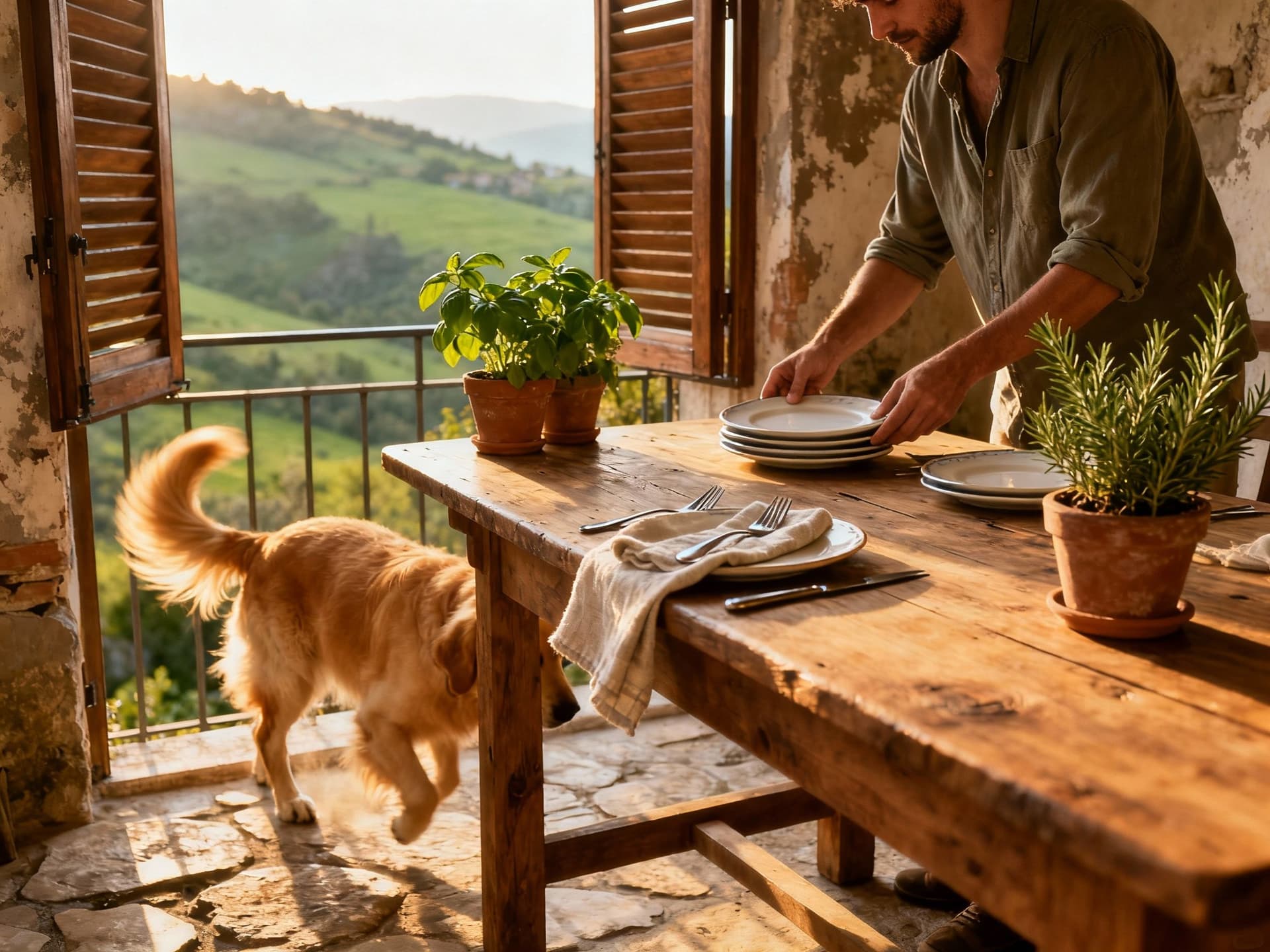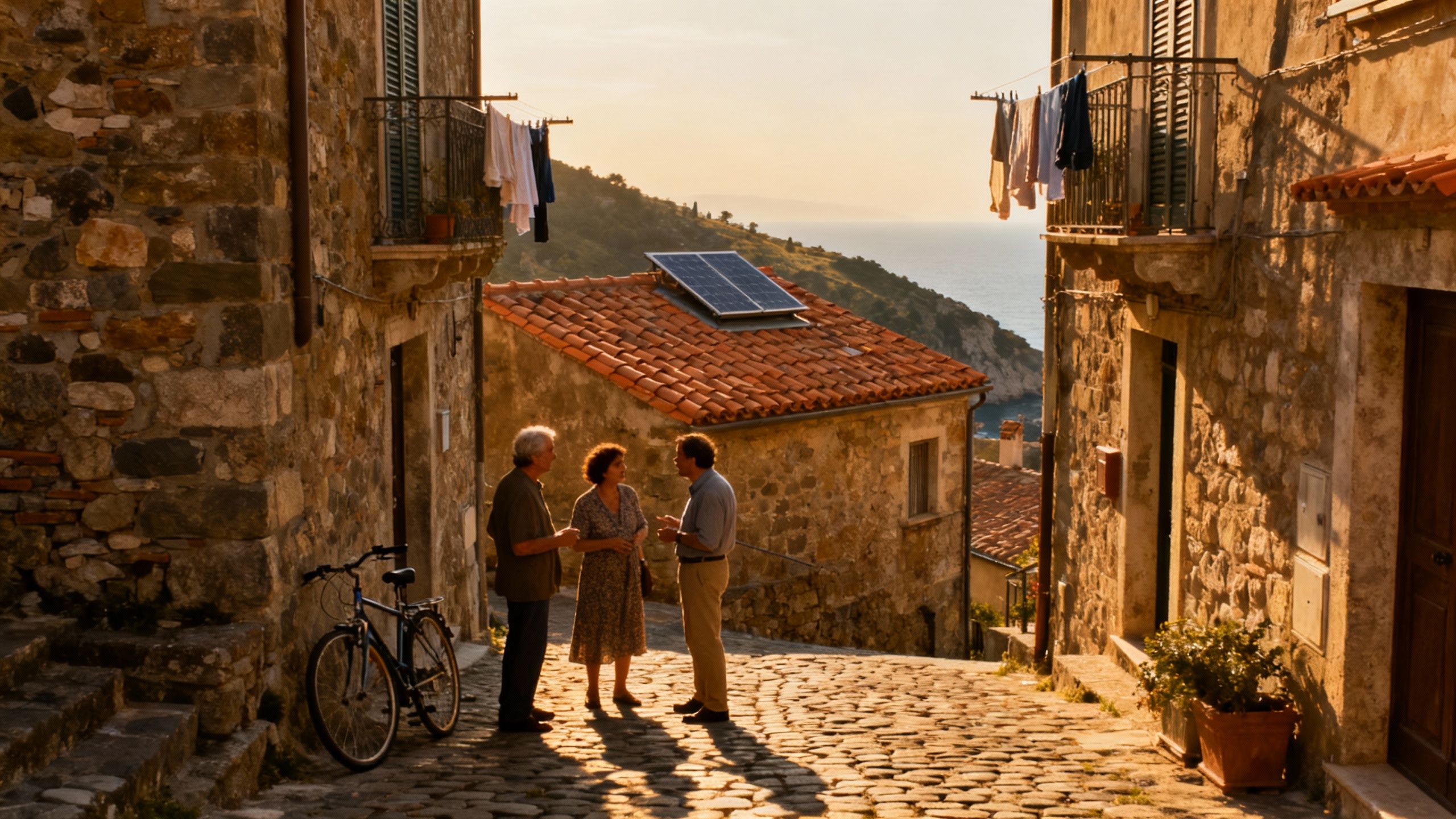The Village Buyers Overlook — A French Life That Pays Back
Choose the village others pass by: sensory life, local craft and recent data show overlooked French places offer sustainable living and steady value.
Imagine waking to a boulangerie siren and fog lifting off a limestone lane, then cycling to a Wednesday market where the mushroom seller knows your name. That rhythmic, seasonal life — long lunches, communal markets, wood-fired warmth in winter — is what draws people to France. But the best places to live here are often the ones buyers skip: quiet inland villages, edge-of-forest hamlets and overlooked coastal towns where green building, seasonal food and neighbour-first culture produce a richer life and, increasingly, steadier prices. This piece pairs those sensory scenes with evidence from France’s recent market data so you can fall in love without losing your head.
Living the French life — small places, big rhythms

Life in France sketches itself around time: market mornings, aperitif evenings, and seasons that rearrange the calendar. In a village in Dordogne or a coastal Breton town, you’ll notice the accents of place — slate roofs, chestnut fences, gardeners pruning for winter — and how local craft and ecology shape daily routines. These are not postcards; they are practical cues for how to live, maintain and steward a home that sits within a living landscape.
Spotlight: a village off the tourist map
Take a hamlet an hour from Bordeaux — narrow Rue des Tisserands, a Sunday marché at Place du Foirail and a communal lavoir turned herb garden. Locals buy farmhouse lots for their orchards, restore stone barns with lime plaster, and favour solar hot water over intrusive panels. It’s a place where the mairie organises tree-planting and craftsmen still make oak shutters: lifestyle choices that also preserve property value by keeping the village resilient and attractive year-round.
Food, craft and seasonal life
From truffle season in Périgord to oyster stalls in Arcachon, France’s calendar is edible. Seasonal crops shape how neighbourhoods gather — harvest festivals, communal bread ovens and cooperative vegetable plots knit newcomers into daily life quickly. For buyers wanting a low-impact, regenerative home, these traditions mean ready-made opportunities to garden, source local materials and join craft networks that support maintenance and restoration.
- Lifestyle highlights to look for
- Weekly market with local producers (look for certified organic stands)
- Village craftsmen (stonemason, charpentier) within 30–45 minutes
- Accessible green spaces: communal woodlands, river walks, or coastline within a short drive
- Local initiatives: energy co-op, community garden, or mairie restoration fund
Making the move: how lifestyle should shape your search

The dreamy scenes matter — but so do the realities that let them persist: stable local services, masonry in good repair, water management and community stewardship. Recent national data shows the French market stabilising after a turbulent spell, reminding buyers that small-town properties that support seasonal life can be both emotionally fulfilling and market-resilient. Use market signals to time your move, but let lifestyle priorities decide the neighbourhood.
Property styles and how they serve life
Stone longères, small village houses and modest seaside villas each come with different maintenance rhythms. Longères reward patience and time with thick walls that hold summer cool and winter warmth; seaside villas need salt-smart materials and elevated drainage; city flats offer walkable cafés but less private green. Match the property’s physical character to how you plan to use it across seasons — garden, foraging, commuting or hosting.
Work with agents who live the life
Local agents who garden, restore or participate in village life spot things remote brokers miss: drainage issues after heavy rain, orientation for passive solar gains, or an ageing bound well that needs re-permitting. Seek agencies with sustainability credentials and local networks — they’ll introduce craftsmen, mairie contacts and neighbourhood social calendars, turning a house into a lived-in home faster.
- Practical steps that blend lifestyle and process
- 1. Visit outside high season to judge daily life (markets, transport, services).
- 2. Ask about local restoration rules and preferred materials (stone, lime, chestnut timber).
- 3. Confirm water, sewage and drainage after winter storms — these shape long-term maintenance.
- 4. Meet local craftspeople and join a village event to test social fit before bidding.
Insider knowledge: expat truths and market realities
Expat experience teaches a few contradictions: the village everyone avoids for being "too remote" often has stronger community ties, lower turnover and craftsmen-based maintenance that preserves value. Meanwhile, coastal or city hotspots can look flashier but suffer seasonality and maintenance spikes. National indices reflect this unevenness: while Paris and some urban centres have their own dynamics, provincial towns have shown pockets of recovery in recent quarters.
Cultural cues that change how you live
Learn local rhythms — knock before entering a shop in small towns, expect businesses to close mid‑afternoon in summer, and plan for winter heating logistics. Language matters, but so does presence: volunteering at local fêtes or joining a marché table cements trust and practical support for longer-term stewardship.
Long-term living: stewardship and seasonal realities
House prices nationally were virtually stable in late 2024 and returned to modest growth in Q1 2025, showing the market’s heterogeneity across regions. That means patient buyers who prioritise stewardship — re-roofing with appropriate materials, installing modest renewable systems, and joining local maintenance efforts — can create both a better life and durable value despite market noise.
- Red flags local buyers watch for
- Absent mairie engagement on drainage or heritage work
- Unresolved access in winter (unpaved lanes that flood or freeze)
- No local craftsmen within reasonable travel — increases restoration costs
- Properties heavily adapted for short-term rental at the expense of long-term community fit
Conclusion: Fall in love with place — then steward it
France lives in seasons, markets and hands that care for stone and soil. If you want a life where the kitchen garden matters as much as the mortgage, seek the villages people skip, interview local agents who garden and restore, and anchor your search to community rhythms more than headlines. Start by visiting off-season, meeting the mairie, and asking for craftsmen referrals — small steps that make living in France richer and more resilient.
Norwegian market analyst who relocated from Oslo to Provence; guides investors with rigorous portfolio strategy and regional ecological value.


